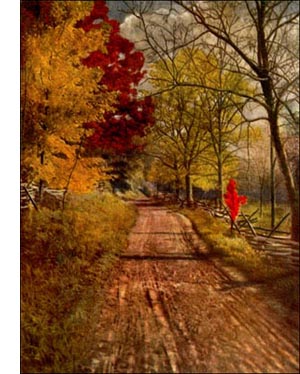English Elm Tree
 The English elm (U. campestris) is a strikingly different tree from its American cousin. Boston Common gives ample opportunity to contrast large specimens of the two species. Dignity is a characteristic of each. Each bears a luxuriant burden of leaves. The Briton is stocky; the American, airily graceful. One stands heavily "upon its heels," the other on tiptoe. One has a compact crown, the other an open, loose one. In October the English elm is still bright, dark green; the American elm has passed into the sere and yellow leaf.
The English elm (U. campestris) is a strikingly different tree from its American cousin. Boston Common gives ample opportunity to contrast large specimens of the two species. Dignity is a characteristic of each. Each bears a luxuriant burden of leaves. The Briton is stocky; the American, airily graceful. One stands heavily "upon its heels," the other on tiptoe. One has a compact crown, the other an open, loose one. In October the English elm is still bright, dark green; the American elm has passed into the sere and yellow leaf.The elm is the favourite tree of the hang bird, or Baltimore oriole, in America. In winter the deserted nests swing from the high outer limbs, where the leaves concealed them in nesting time. The English elm at home is the red-breast's tree. These birds build, not in the upper limbs, but in those that grow down near the trunk, and come earliest into leaf.
Classical literature proves the antiquity and the great importance of the elms of southern Europe. The Romans used elm leaves as forage for cattle. In the vineyards elms were planted to support the vines. The trees were well pruned so they should not overshadow the grapes. It was counted dangerous to give bees freedom to visit blooming elms, lest they become surfeited, and sicken as a result. In this opinion the early observers were evidently mistaken. Virgil discourses upon the successful grafting of oak upon elm, and describes swine eating acorns that dropped from the fruiting branches of this wonderful tree. Experiment long ago proved the fallacy of this report. In England the rustic still watches the elm for signal to sow his grain, relying on the old saw:
"When the elme leaf is as big as a mouse's ear, Then to sow barley never fear."